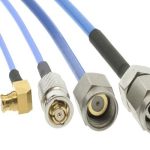Connectors are an essential part of many electronic systems, as they provide the interface between different components. However, connectors can also cause signal problems due to a phenomenon known as return loss. In this article, we will explore what connector return loss is, how it affects signal quality, the different types of return loss, and the common causes of return loss. We will also discuss methods for measuring return loss and strategies for reducing it.
What is Connector Return Loss?
Return loss is a measure of how much power is reflected back from a device or system when a signal is transmitted into it. Connector return loss specifically refers to the reflection of a signal at the point where the connector is mated with another connector or device.
Return loss is measured in decibels (dB) and is calculated by comparing the power of the incident signal with the power of the reflected signal. A higher return loss value indicates a lower amount of reflected power and, therefore, better signal quality.
Connector return loss occurs due to impedance mismatches between the connectors or between the connectors and the devices they are connected to. Impedance is the resistance to the flow of electrical current in a circuit and is measured in ohms. In a perfectly matched system, the impedance of the source, the transmission line, and the load are all the same, resulting in minimal signal reflection. However, in the case of an impedance mismatch, some of the signal is reflected back towards the source, resulting in return loss.
How Return Loss Affects Signal Quality
Return loss can significantly impact signal quality, leading to signal problems such as increased noise and bit errors. When a signal is reflected back towards the source due to return loss, it combines with the original signal, resulting in a new signal with a higher amplitude. This increases the noise level in the signal, reducing the signal-to-noise ratio (SNR). A lower SNR leads to a lower quality signal, making it more difficult to interpret and decode.
Return loss can also increase the bit error rate (BER) of a signal. The BER is a measure of the number of errors in a data transmission, with a higher BER indicating more errors. Return loss can cause bit errors by changing the shape of the transmitted signal, causing it to be distorted or corrupted. This makes it more difficult for the receiver to correctly interpret the signal, leading to more errors.
Types of Connector Return Loss
There are two main types of connector return loss: reflection loss and transmission loss.
Reflection loss occurs when a signal is reflected back towards the source due to an impedance mismatch at the point of connection. Reflection loss can cause signal problems such as increased noise and bit errors, as discussed earlier.
Transmission loss, on the other hand, occurs when a signal is lost due to an impedance mismatch or other factors along the transmission line. Transmission loss can cause signal attenuation, where the signal strength decreases as it travels along the line, resulting in a weaker signal at the receiver.
Common Causes of Connector Return Loss
There are several common causes of connector return loss, including:
- Impedance mismatches: As discussed earlier, impedance mismatches between connectors or between connectors and devices can lead to return loss.
- Poor connector design: The design of the connector can also impact return loss. Connectors with poorly designed mating surfaces or inadequate shielding can cause impedance mismatches and increase return loss.
- Improper installation: Improper installation of connectors can also cause impedance mismatches and increase return loss. For example, over-tightening a connector can deform it, leading to an impedance mismatch and increased return loss.
Measuring Connector Return Loss
There are several methods for measuring connector return loss, including time domain reflectometry (TDR) and vector network analyzers (VNAs).
Time Domain Reflectometry (TDR)
TDR is a method of measuring return loss by sending a short pulse down the transmission line and measuring the reflected signal. The TDR sends a pulse down the transmission line and measures the time it takes for the signal to reach the end of the line and reflect back. The reflected signal is then analyzed to determine the return loss.
TDR is a fast and reliable method for measuring return loss and is commonly used in the field for testing and troubleshooting. However, it has some limitations, such as limited accuracy and the inability to measure return loss at different frequencies.
Vector Network Analyzers (VNAs)
VNAs are highly precise instruments that can measure return loss at different frequencies. VNAs work by sending a signal down the transmission line and measuring the amplitude and phase of the transmitted and reflected signals. The VNA then uses this information to calculate the return loss and other parameters such as insertion loss and phase shift.
VNAs are more complex and expensive than TDRs but provide more accurate and detailed measurements. They are commonly used in laboratory settings for design and characterization of components and systems.
Interpreting Return Loss Measurements
Return loss measurements are typically reported in dB and can be interpreted as follows:
- High return loss values (e.g., -20 dB or lower) indicate a low amount of reflected power and, therefore, good signal quality.
- Low return loss values (e.g., -10 dB or higher) indicate a high amount of reflected power and, therefore, poor signal quality.
Reducing Connector Return Loss
There are several strategies for reducing connector return loss, including:
- Selecting high-quality connectors: Choosing connectors with well-designed mating surfaces and proper shielding can help minimize impedance mismatches and reduce return loss.
- Using impedance matching techniques: Impedance matching techniques such as using matching transformers or impedance-matching networks can help minimize impedance mismatches and reduce return loss.
- Proper installation: Proper installation techniques, such as using torque wrenches to tighten connectors to the correct torque, can help prevent deformation and reduce impedance mismatches.
Conclusion
Connector return loss can significantly impact signal quality and lead to signal problems such as increased noise and bit errors. Understanding the causes of return loss and using methods such as TDR and VNA to measure and reduce it can help maintain signal quality and prevent signal problems. By selecting high-quality connectors, using impedance matching techniques, and properly installing connectors, you can minimize impedance mismatches and reduce return loss, leading to better signal quality and more reliable electronic systems.



